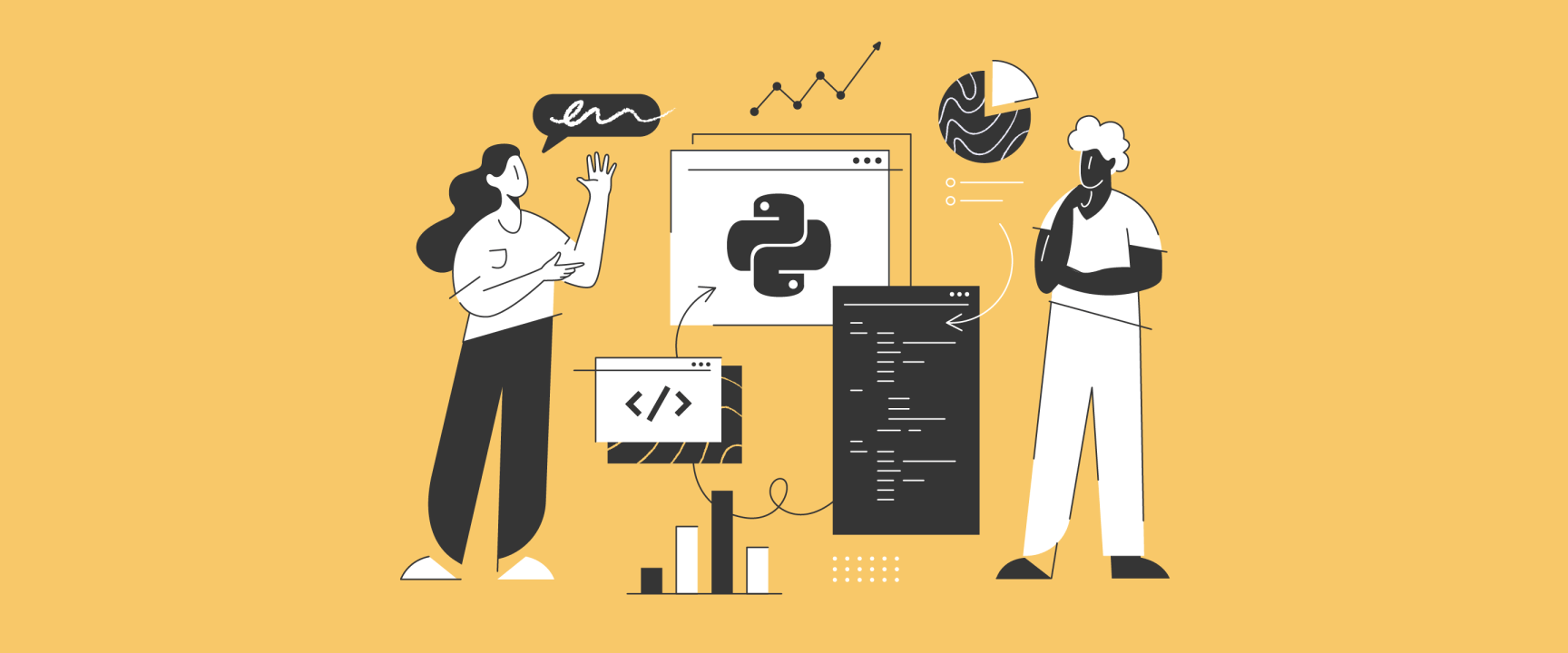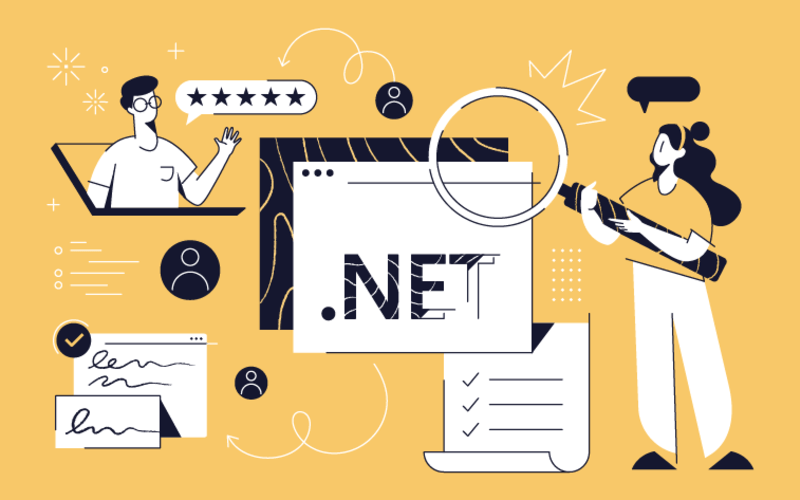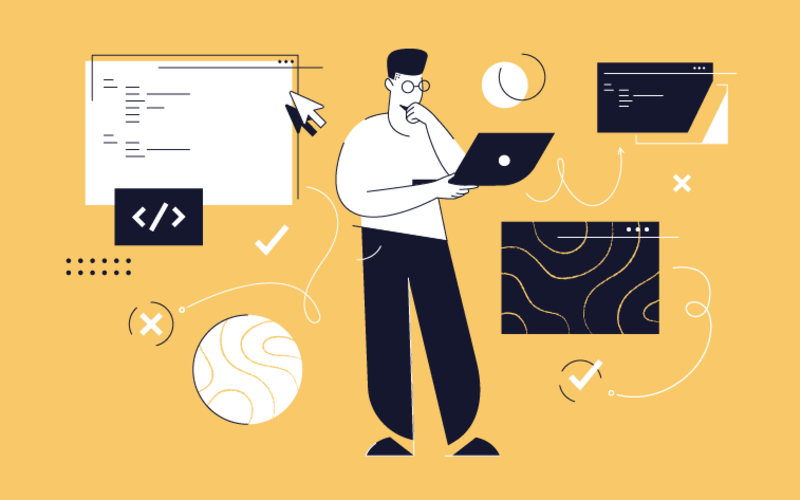Python is a popular programming language and is widely used for Data Science. This language seems an excellent asset to master and include in the advanced techniques and principles of Data Science. Even better, Python is not too complicated or complex to learn and master, which only bodes well for this combination we talk about.
But why Python for data analysis? What makes Python the first recommendation for excelling in Data Science? And why do recruiters always ask about Python experience when they interview someone for the Data Scientist position?
Well, the obvious answer is that Python is relatively easy to learn, so with this in mind, you can quickly delve into more complex things such as the analytics of Data Science. Python has a convenient and straightforward syntax, and it’s perfect even for those that are not initially engineering professionals.
Suppose you are a Python developer or a Data Scientist, or you want to become one or both. In that case, this article is beneficial for you but just as helpful for employers who need to hire within these technologies.
Below, we will talk more about the connection between Python and Data Science, as well as some tips and expected challenges while learning Python and its implementation with Data Science. Being a data scientist is a popular and in-demand profession among most interested in tech and IT, even newcomers to this industry.
Why is Python a good language choice for Data Science?
In summary, first off, Data Science is in great demand and is well paid; plus, add the simplicity of mastering Python as a programming language, and we already have a win-win combination. Let’s elaborate by describing what data scientists do and how it relates in context to Python.
The first step in Data Science is gathering all unprocessed data and looking for specifics. Python libraries come in handy here because they contain practical and beneficial libraries for data retrieval in no time.
Then, the data scientists next scrap for information and analyze it too, with the help of Python libraries. One combination that stands out especially is Python and Selenium. Selenium, a powerful tool for controlling web browsers, is immensely useful for dynamic web scraping. Paired with Python, it provides an efficient approach to gather data from evolving, real-time web sources, enhancing the range and depth of data analysis.
In the next stage, the data scientist needs to use some tools for data visualization. What they do with this data is assemble it visually neat to present it. Here, Python saves the day with its libraries for visuals and graphics management.
And lastly, the data scientist needs to use various and often complex learning algorithms and handle multiple tools simultaneously. In this case, the Scikit-Learn (one of the libraries of Python for machine learning purposes) is an incredible asset to use.
Tips for newcomers to Python and aspiring Data Scientists
There are many Python tutorials out there you can always refer to or courses, and even online videos that could, to some extent, help you understand what Python is about. Before upgrading your Python skills, it’s good to know what you can expect and anticipate regarding the stages of the whole process.
- First, research and determine a Python platform.
- Try to be active with small initial tasks, testing attempts, and mini-project activities. At this stage, explore more about web scraping and API too.
- Learn about loops. These are chunks of code that repeat through the development process.
- Delve more into functions. These are useful when you repeat some calculation during coding, and you (as dev currently) will write the functions yourself.
- Pay close attention to the libraries in Python. This is perhaps the most important thing when you learn Python for Data Science. They are the essential part that makes this programming language incredibly useful and easy to understand and implement. We will cover this in-depth below.
- Supposedly you are striving for a data science career. In this case, upgrade/update your portfolio, and showcase a Python Data Science version.
- Try to focus on more challenging tasks as you start learning about Python. At this point, courses and advanced plans will work best—learning about classifications, clustering, analyses, and more.
But who better explains this matter than a Data Scientist? We asked a Senior Data Scientist in Proxify, Bertan Günyel, to tell us more about why Python is excellent for Data Science and what to focus on for mastering it:
“If you are fully new to Python, it’s best to refer to freely available online videos to get the gist and basics of this programming language, and do not skip the language-agnostic topics in software engineering. Emphasize learning about codes because understandable codes are what make a great data scientist a true expert. Try to read others’ codes as well. Also, pay attention to Python libraries, modules, and frameworks—Pandas, SciPy, StatsModels, NumPy, PyTorch. And don’t forget to also learn about basics (and more if possible) about algorithms and their dynamics.”
 Bertan Günyel
Bertan Günyel
Python libraries, modules, and frameworks useful for Data Science
If you want to learn data science, you need to know the components provided by Python, like its libraries, frameworks, and modules, as mentioned above.
- Pandas – A data analysis and visualization library through graph and chart handling. This library is open-source and correlates to NumPy (elaborated below). This library is great to work with because it pairs nicely with packages in Data Science. It is widely used for data fill and cleansing, merging, stat analyses, data visualization, and more data handling options.
- NumPy (Numerical Python) – This is a Python package library, and it is obligatory to know if you want to work with Pandas. Its features and usages include matrices and working with arrays.
- SciPy (Scientific Python) – This library is a library for scientific computing processes and a large grouping of math algorithms, and it is also open-source. NumPy is merged within and under SciPy, so as you see, Python connects its segments within one another. The usages of SciPy include signal processing, optimizations, and stats handling.
- Scikit-learn – This is a module in Python used for machine learning purposes, and it is positioned over SciPy. Usages of it include stats modeling, classifications, and cluster handling too.
- TensorFlow – Another library on this list, TensorFlow, is open-source and used for large-scale machine learning and numerical computation processes. Its primary usage is also noticed in neural network creation and development.
- PyTorch – Now it’s time to mention a Python framework, like PyTorch, an open source framework used for research in deep learning.
- statsmodels – This is a Python module for estimates of stats models through functions and classes. With this module, you can also do various tests, such as tests for stats, or explore data in-depth for some data analysis types.
Also, apart from the listings mentioned above, you should explore and learn more about Jupyter Notebook. This computing platform is web-based, interactive, and valuable for working with data and code. When you combine it with Python, your learning and working experience improves majorly – neat and streamlined sharing of data and document handling as well.
As an aspiring data scientist with Python experience, you will need to handle data structure excellently, and if you managed to go through Python in-depth, you’d know this too. Data structures in Python are another great asset to master.
These include sets (unique elements in a collection without some particular order throughout), lists (many items in an order that are essential for Python projects), and tuples (data structure in Python that is built-in, with objects in a specific order and collected at once).
How to merge Python knowledge and expertise with Data Science effectively?
The introduction to data science has strong connections with Python, as evident so far and mentioned in the sections above. The practicality of Python is immensely fitting and useful to help you delve into data science and work it effectively.
If you get the gist of Python quite well or advanced, you can ease your way into data science or even try to be a data analyst. Now, let’s not confuse these two professions; they do different things, but what data scientists and data analysts have in common is they both work on data visualization, data mining, warehousing, and stats and math-related tasks.
However, merging Pythion with Data science is not too complex if you manage to get to a medium or advanced level of Python. Yet, there are some things to keep in mind, such as possible issues and challenges of learning Python and Data Science, that could become a setback if not known aforehand. True mastery is not just implementing all the positives but knowing the potential risks and challenges to avoid them.
As Bertan explained:
“When you start in Python, you might get too eager to learn all about the libraries or specific interesting and functional features, but there is more to Python than just this. Focus on the fundamentals of it as much as you do on libraries, of course. And about Data Science, possible challenges could be an overestimation of oneself. Yes, Python is relatively easy, but Data Science is more demanding. To master data science, you need excellent math talents and skills, as well as affinities and expertise for software engineering.”
The takeaway
If you genuinely strive for a Data Science career, you must first focus on mastering Python. You can do this through numerous Python courses online, and once you advance in the field, you can start exploring more about Data Science. It is a programming language that is relatively easy to learn but offers countless benefits for working with data.
First, set a knowledge base and expertise for Python as a programming language because it will be the handiest thing before starting in Data Science, and then when you become a Data Scientist as well.






